Mainly general build quality.What kind comparison are we talking about?
Latest Thread
You are using an out of date browser. It may not display this or other websites correctly.
You should upgrade or use an alternative browser.
You should upgrade or use an alternative browser.
Very interesting comparison based on pilot experience.
F-35 annihilates everyone in terms of RWR and ECM. In radar it annihilates the F-16C and on pair with heavy F-15E.
When in comes to maneuverability F-35 is very good at low speeds and close maneuver but somewhat losing in sustained turn rate.
The major problem of the F-35 is ease of use especially compared to two seater F-15E.
The U.S. Air Force Just Admitted The F-35 Stealth Fighter Has Failed
David AxeForbes Staff
Aerospace & Defense
I write about ships, planes, tanks, drones, missiles and satellites.
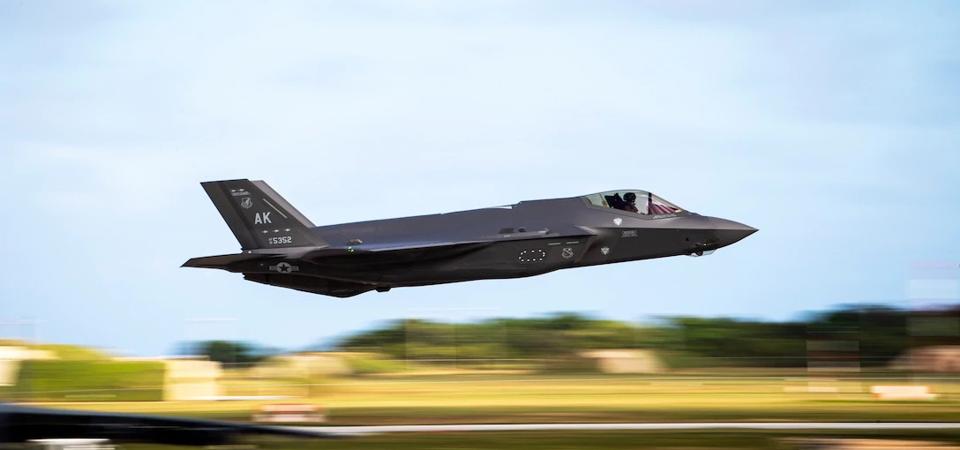
An F-35 assigned to the 356th Fighter Squadron takes off to participate in an agile combat ... [+]
U.S. AIR FORCE PHOTO BY SENIOR AIRMAN DUNCAN C. BEVAN
The U.S. Air Force’s top officer wants the service to develop an affordable, lightweight fighter to replace hundreds of Cold War-vintage F-16s and complement a small fleet of sophisticated—but costly and unreliable—stealth fighters.
The result would be a high-low mix of expensive “fifth-generation” F-22s and F-35s and inexpensive “fifth-generation-minus” jets, explained Air Force Chief of Staff Gen. Charles Brown Jr.
If that plan sounds familiar, it’s because the Air Force a generation ago launched development of an affordable, lightweight fighter to replace hundreds of Cold War-vintage F-16s and complement a small future fleet of sophisticated—but costly and unreliable—stealth fighters.
But over 20 years of R&D, that lightweight replacement fighter got heavier and more expensive as the Air Force and lead contractor Lockheed Martin LMT +1.2% packed it with more and more new technology.
Yes, we’re talking about the F-35. The 25-ton stealth warplane has become the very problem it was supposed to solve. And now America needs a new fighter to solve that F-35 problem, officials said.
MORE FOR YOU
With a sticker price of around $100 million per plane, including the engine, the F-35 is expensive. While stealthy and brimming with high-tech sensors, it’s also maintenance-intensive, buggy and unreliable. “The F-35 is not a low-cost, lightweight fighter,” said Dan Ward, a former Air Force program manager and the author of popular business books including The Simplicity Cycle.
The F-35 is a Ferrari, Brown told reporters last Wednesday. “You don’t drive your Ferrari to work every day, you only drive it on Sundays. This is our ‘high end’ [fighter], we want to make sure we don’t use it all for the low-end fight.”
“I want to moderate how much we’re using those aircraft,” Brown said.
Hence the need for a new low-end fighter to pick up the slack in day-to-day operations. Today, the Air Force’s roughly 1,000 F-16s meet that need. But the flying branch hasn’t bought a new F-16 from Lockheed since 2001. The F-16s are old.
In his last interview before leaving his post in January, Will Roper, the Air Force’s top acquisition official, floated the idea of new F-16 orders. But Brown shot down the idea, saying he doesn’t want more of the classic planes.
The 17-ton, non-stealthy F-16 is too difficult to upgrade with the latest software, Brown explained. Instead of ordering fresh F-16s, he said, the Air Force should initiate a “clean-sheet design” for a new low-end fighter.
Brown’s comments are a tacit admission that the F-35 has failed. As conceived in the 1990s, the program was supposed to produce thousands of fighters to displace almost all of the existing tactical warplanes in the inventories of the Air Force, Navy and Marine Corps.
The Air Force alone wanted nearly 1,800 F-35s to replace aging F-16s and A-10s and constitute the low end of a low-high fighter mix, with 180 twin-engine F-22s making up the high end.
But the Air Force and Lockheed baked failure into the F-35’s very concept. “They tried to make the F-35 do too much,” said Dan Grazier, an analyst with the Project on Government Oversight in Washington, D.C.
There’s a small-wing version for land-based operations, a big-wing version for the Navy’s catapult-equipped aircraft carriers and, for the small-deck assault ships the Marines ride in, a vertical-landing model with a downward-blasting lift engine.
The complexity added cost. Rising costs imposed delays. Delays gave developers more time to add yet more complexity to the design. Those additions added more cost. Those costs resulted in more delays. So on and so forth.
Fifteen years after the F-35’s first flight, the Air Force has just 250 of the jets. Now the service is signaling possible cuts to the program. It’s not for no reason that Brown has begun characterizing the F-35 as a boutique, high-end fighter in the class of the F-22. The Air Force ended F-22 production after completing just 195 copies.
“The F-35 is approaching a crossroads,” Grazier said.
Pentagon leaders have hinted that, as part of the U.S. military’s shift in focus toward peer threats—that is, Russia and China—the Navy and Air Force might get bigger shares of the U.S. military’s roughly $700-billion annual budget. All at the Army’s expense.
“If we’re going to pull the trigger on a new fighter, now’s probably the time,” Grazier said. The Air Force could end F-35 production after just a few hundred examples and redirect tens of billions of dollars to a new fighter program.
But it’s an open question whether the Air Force will ever succeed in developing a light, cheap fighter. The new low-end jet could suffer the same fate as the last low-end jet—the F-35—and steadily gain weight, complexity and cost until it becomes, well, a high-end jet.
If that happens, as it’s happened before, then some future Air Force chief of staff might tell reporters—in, say, the year 2041—that the new F-36 is a Ferrari and you don’t drive your Ferrari to work every day.
To finally replace its 60-year-old F-16s, this future general might say, the Air Force should develop an affordable, lightweight fighter.
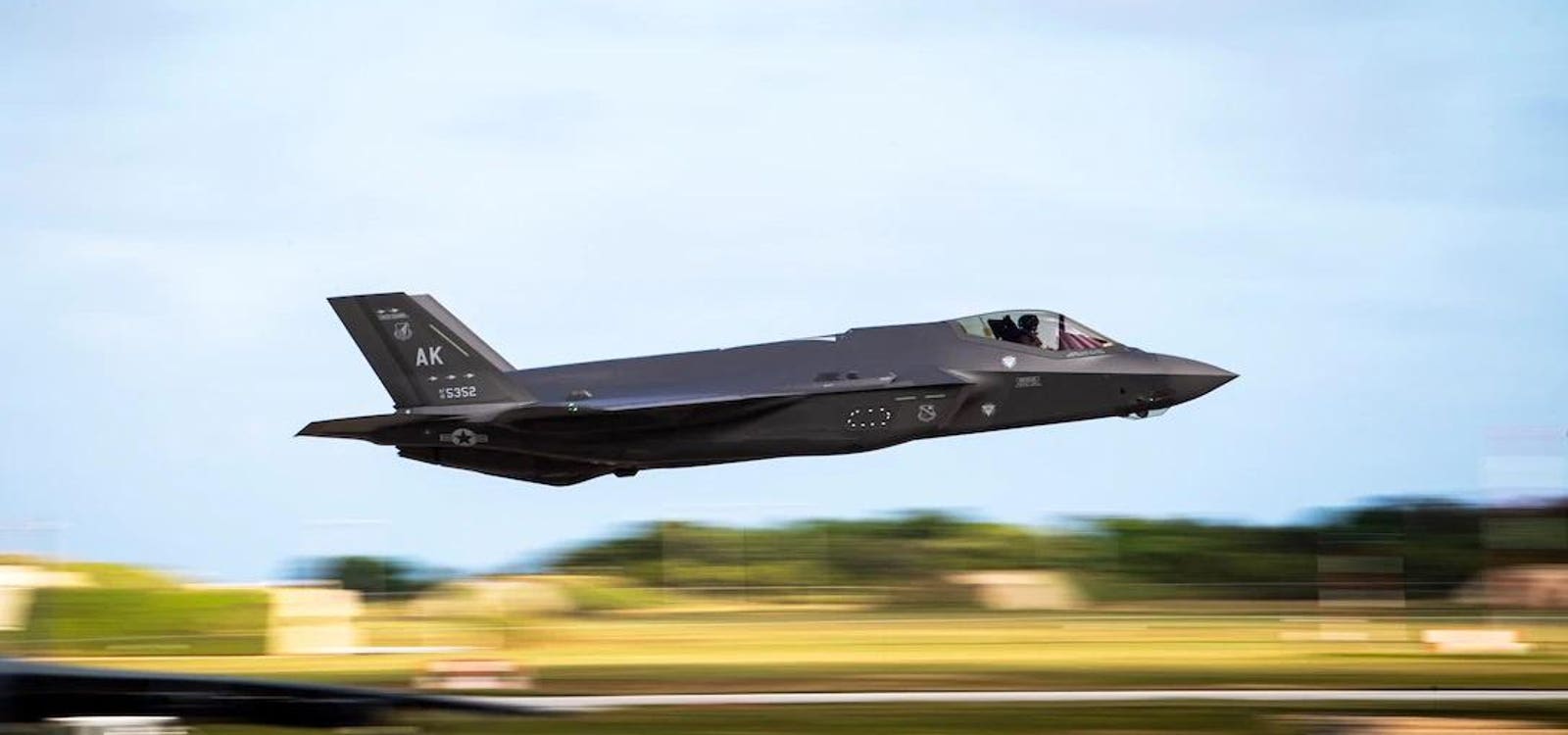
The U.S. Air Force Just Admitted The F-35 Stealth Fighter Has Failed
The U.S. Air Force’s chief of staff wants the service to develop an affordable, lightweight fighter to replace hundreds of aging F-16s and complement a small fleet of sophisticated F-35 stealth fighters. But an affordable, lightweight fighter is exactly what the F-35 was first conceived to be.
 www.forbes.com
www.forbes.com
Unique footage shows a reportedly rare landing maneuver performed by a British Royal Navy F-35 pilot onto the HMS Queen Elizabeth. The pilot conducts a Shipborne Rolling Vertical Landing (SRVL), which is used to land a Vertical/Short Take Off Landing aircraft using both the vertical thrust from the jet engine and lift from the wings. This allows for a rolling landing with a significantly reduced approach speed and landing distance.
But what is the point, you may be asking... The SRVL maneuver allows the aircraft to land without first dumping access fuel and ammunition into the sea to lighten its load. Therefore, it can be packed to the brim with payload and no-one will worry about wasting ammo and polluting the ocean. Additionally, the technique has no need for a tail hook and arresting cable to bring the aircraft to a stop.
But what is the point, you may be asking... The SRVL maneuver allows the aircraft to land without first dumping access fuel and ammunition into the sea to lighten its load. Therefore, it can be packed to the brim with payload and no-one will worry about wasting ammo and polluting the ocean. Additionally, the technique has no need for a tail hook and arresting cable to bring the aircraft to a stop.
The three Belgian companies of the BeLightning consortium have started producing parts of the F-35 aircraft, Belga news agency reports.
Through the Essential Security Interest (ESI) program, Lockheed Martin will provide industrial opportunities for multiple Belgian companies in all three geographic regions (Flanders, Brussels and Wallonia). The projects secured through the ESI program will bring cutting-edge manufacturing techniques and benefits, expanding the Belgian industry’s skills and knowledge and providing high-tech jobs for Belgians for decades to come. Some of the companies that have secured projects through the ESI program include ASCO, Feronyl, ILIAS Solutions, SABCA, Sonaca, and AMI Metals. The Belgian Air Component will operate F-35As from Kleine-Brogel Air Base in the Flanders region and Florennes Air Base in the Walloon region.
Three Belgian aeronautical companies boarded the Lockheed Martin F-35 program in March 2021 thanks to a significant public investment: the federal government has in fact decided to grant a total aid of 135 million euros to Sonaca, Sabca and Asco so that they can manufacture rear fins (horizontal stabilizers) for the F-35 Lightning II ordered, among others, by the Belgian Defense. The three companies of the BeLightning consortium have just started producing these parts of the F-35 aircraft.

 www.airrecognition.com
www.airrecognition.com
Through the Essential Security Interest (ESI) program, Lockheed Martin will provide industrial opportunities for multiple Belgian companies in all three geographic regions (Flanders, Brussels and Wallonia). The projects secured through the ESI program will bring cutting-edge manufacturing techniques and benefits, expanding the Belgian industry’s skills and knowledge and providing high-tech jobs for Belgians for decades to come. Some of the companies that have secured projects through the ESI program include ASCO, Feronyl, ILIAS Solutions, SABCA, Sonaca, and AMI Metals. The Belgian Air Component will operate F-35As from Kleine-Brogel Air Base in the Flanders region and Florennes Air Base in the Walloon region.
Three Belgian aeronautical companies boarded the Lockheed Martin F-35 program in March 2021 thanks to a significant public investment: the federal government has in fact decided to grant a total aid of 135 million euros to Sonaca, Sabca and Asco so that they can manufacture rear fins (horizontal stabilizers) for the F-35 Lightning II ordered, among others, by the Belgian Defense. The three companies of the BeLightning consortium have just started producing these parts of the F-35 aircraft.

Belgian companies Sonaca Sabca and Asco started producing parts of F-3
The three Belgian companies of the BeLightning consortium have started producing parts of the F-35 aircraft, Belga news agency reports.
Difficulty sustaining the engine on the Lockheed Martin F-35 Lightning II Joint Strike Fighter (JSF) is contributing to a higher cost per flying hour than originally anticipated, a former programme official and a government auditor have noted.
A Lockheed Martin official told reporters on 10 June at the company's F-35 production facility in Fort Worth, Texas, that the aircraft's cost per flying hour is USD33,000 in 2012 dollars: USD38,655 in 2021 dollars.
A former F-35 programme official, who was grated anonymity to speak freely, told Janes on 9 June that the original concept predicted that the aircraft would have a cost per flying hour between USD25,000–30,000 in 2021 dollars, once the programme reached the current stage: between initial operational capability (IOC) and full operational capability (FOC). This cost per flying hour was supposed to be somewhat comparable to newer Lockheed Martin F-16 Fighting Falcons.
“You only have a finite amount of money and you can spend your money buying new aircraft [but then] you do not have any money to fly them,” the former F-35 programme official said. “Or you can spend less [money] buying new aircraft because it costs more to fly them.
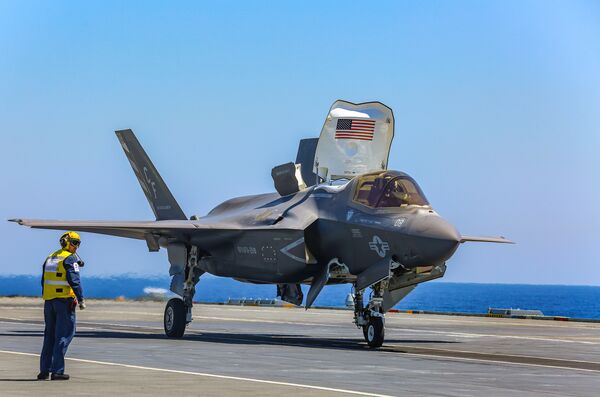
A Lockheed Martin official told reporters on 10 June at the company's F-35 production facility in Fort Worth, Texas, that the aircraft's cost per flying hour is USD33,000 in 2012 dollars: USD38,655 in 2021 dollars.
A former F-35 programme official, who was grated anonymity to speak freely, told Janes on 9 June that the original concept predicted that the aircraft would have a cost per flying hour between USD25,000–30,000 in 2021 dollars, once the programme reached the current stage: between initial operational capability (IOC) and full operational capability (FOC). This cost per flying hour was supposed to be somewhat comparable to newer Lockheed Martin F-16 Fighting Falcons.
“You only have a finite amount of money and you can spend your money buying new aircraft [but then] you do not have any money to fly them,” the former F-35 programme official said. “Or you can spend less [money] buying new aircraft because it costs more to fly them.

Difficult F-35 engine sustainment contributing to higher than expected cost per flight hour
Difficulty sustaining the engine on the Lockheed Martin F-35 Lightning II Joint Strike Fighter (JSF) is contributing to a higher cost per flying hour than originally...
www.janes.com
Fighter aircraft: F-35A offers highest overall benefit at lowest cost by far
The Federal Council based its decision on a comprehensive technical evaluation of four new fighter aircraft candidates (Eurofighter by Airbus, Germany; F/A-18 Super Hornet by Boeing, USA; F-35A by Lockheed Martin, USA; Rafale by Dassault, France)
With 336 points, it showed the highest overall benefit and was the clear winner with a lead of 95 points or more over the other candidates.
In terms of effectiveness, the F-35A achieved the best result because it has a marked technological advantage over the other candidates: it includes entirely new, extremely powerful and comprehensively networked systems for protecting and monitoring airspace. The F-35A is able to ensure information superiority; this means pilots benefit from a higher situational awareness in all task areas when compared with the other candidates. This is especially true for day-to-day air policing.
What is more, the F-35A is the only aircraft that has been designed from the ground up to be especially difficult for other weapons systems to detect. The resulting high survivability is a great advantage for the Swiss Air Force.
In addition, because the F-35A is comparatively easy to operate and is able to provide information superiority, it requires less training and has a better ratio of flight to simulator hours. Because of this, the F-35A requires about 20% fewer flight hours than other candidates, and about 50% fewer take-offs and landings than the Air Force’s current jet aircraft, which the F-35A will be replacing.
Finally, it can be assumed that as the newest of the weapons systems evaluated, the F-35A will be able to sustain its technological lead well into the future. Given the planned service life of 30 years, this is a major advantage over the other candidates.
 www.admin.ch
www.admin.ch
The Federal Council based its decision on a comprehensive technical evaluation of four new fighter aircraft candidates (Eurofighter by Airbus, Germany; F/A-18 Super Hornet by Boeing, USA; F-35A by Lockheed Martin, USA; Rafale by Dassault, France)
With 336 points, it showed the highest overall benefit and was the clear winner with a lead of 95 points or more over the other candidates.
In terms of effectiveness, the F-35A achieved the best result because it has a marked technological advantage over the other candidates: it includes entirely new, extremely powerful and comprehensively networked systems for protecting and monitoring airspace. The F-35A is able to ensure information superiority; this means pilots benefit from a higher situational awareness in all task areas when compared with the other candidates. This is especially true for day-to-day air policing.
What is more, the F-35A is the only aircraft that has been designed from the ground up to be especially difficult for other weapons systems to detect. The resulting high survivability is a great advantage for the Swiss Air Force.
In addition, because the F-35A is comparatively easy to operate and is able to provide information superiority, it requires less training and has a better ratio of flight to simulator hours. Because of this, the F-35A requires about 20% fewer flight hours than other candidates, and about 50% fewer take-offs and landings than the Air Force’s current jet aircraft, which the F-35A will be replacing.
Finally, it can be assumed that as the newest of the weapons systems evaluated, the F-35A will be able to sustain its technological lead well into the future. Given the planned service life of 30 years, this is a major advantage over the other candidates.
Air2030: Federal Council decides to procure 36 F-35A fighter aircraft
Current information from the Federal Administration. All press releases from the Federal Administration, the departments and offices.
Quarterback in the Sky: The F-35 Is Far More Than Just a Fighter Jet

By Stavros Atlamazoglou
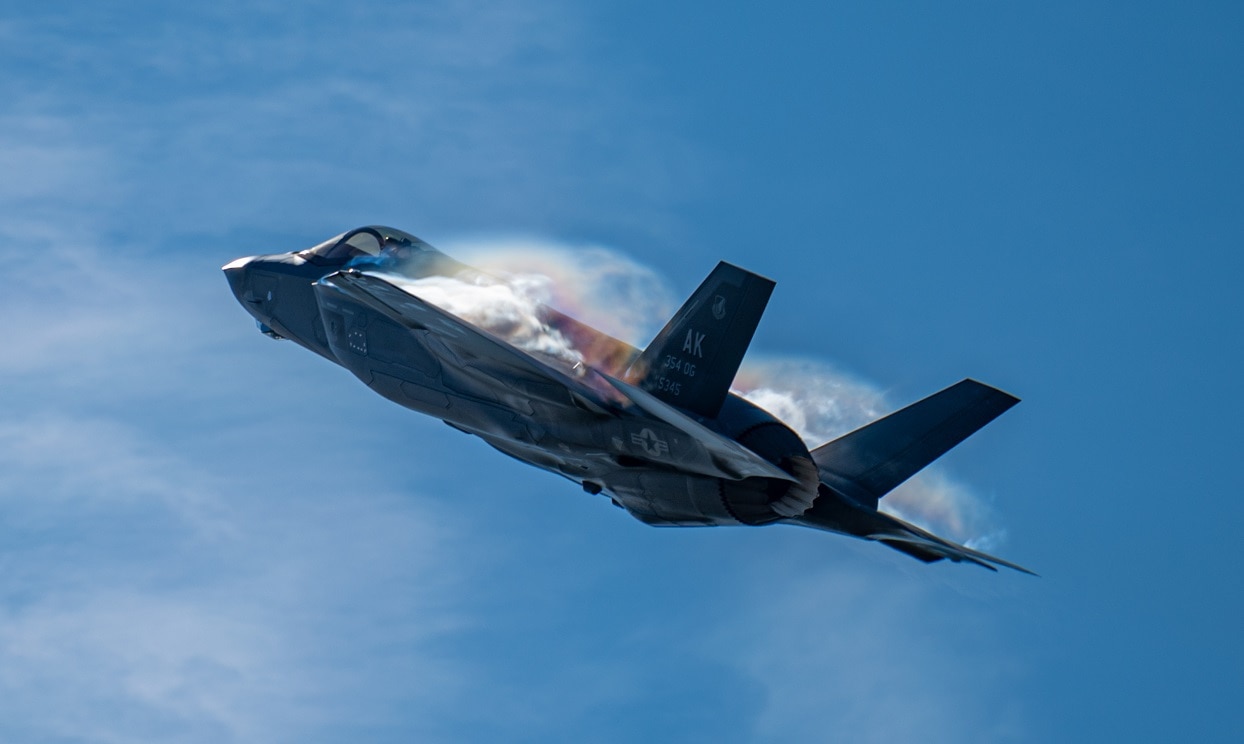
U.S. Air Force Maj. Kristin "BEO" Wolfe, F-35A Lightning II Demonstration Team pilot and commander, flies an aerial performance for the 2021 Arctic Lightning Air Show, July 30, 2021, Eielson Air Force Base, Alaska. The F-35 Demonstration Team utilized F-35s from the 354th Fighter Wing in order to showcase the combat capability of the Pacific Air Force's newest F-35 units. (U.S. Air Force photo by Capt. Kip Sumner)
Blue Flag 21, the largest fighter jet exercise in Israel, just concluded with the participation of the most advanced fighter jets on the planet.
With over 70 participating aircraft of many types, the exercise offered an opportunity to see how the F-35 platform would work together with older fighters in a war with China or Russia.
Blue Flag 21
In total, eight nations with a versatile fleet of aircraft participated in the most important air combat exercise on the Israeli calendar.
The U.S. Air Force joined with F-16C Fighting Falcons, the Israeli hosts with their F-35A Lightning IIs, F-15I Eagles, F-16I Sufans and F-16Cs, the French Air Force with their Dassault Rafale F3Rs, the Hellenic Air Force with their F-16C, the Indian Air Force with their Mirage 2000s, the Italian Air Force with their F-35As, the German Air Force with their Typhoon FGR4s, and finally the Royal Air Force—the first deployment of a British fighter squadron in Israel since the Levantine country’s independence—also with their Typhoon FGR4s.
“Everybody out here wants to win, but we all have different ways of doing that. That’s the interesting part … getting together with the different nations and figuring out how we are going to win together, focusing on each other’s strengths and minimizing each other’s weaknesses,” said U.S. Air Force Capt. Bjorn Nielsen, the 480th EFS integration specialist, said in a press release.
The aircraft executed Suppression and Destruction of Enemy Air Defenses (SEAD/DEAD), aerial combat, ground strikes, and defensive missions.
The fifth iteration of the biennial exercise took place in Uvda Air Base.
Harnessing the Power of the F-35
One of the key aspects of Blue Flag 21 was to test and push to the limits the interoperability of 4th and 5th generation aircraft.
Although the U.S. Air Force seems committed to the F-35 platform, it still has hundreds of older 4th generation fighter jets in its fleet. Although not as competitive or survivable in a near-peer combat scenario, these F-16s and F-15s are still important and can be quite effective if employed properly.
Dubbed the “quarterback of the skies,” the F-35 is an extremely capable aircraft that has the ability to increase the effectiveness of other, older aircraft on the battlefield. Its stealth characteristics combined with its ability to quickly collect, analyze, and disseminate information on the tactical outlook to any friendly aircraft in the vicinity makes America’s second stealth fighter a force multiplier.
For example, during a Blue Flag 21 scenario, a flight of four Greek F-16Cs was protecting some “high-value targets” when they got jumped by about 20 “enemy” aircraft. F-35As accompanying the F-16Cs used their sensors and tech to quickly understand the battlefield and guide the older generation F-16Cs to the incoming “hostile” jets. As a result, the Greek pilots “shot down” in mock combat 17 out of the 19 “enemy” aircraft.
“To have the F-16s work with the fifth-generation platforms, [it] gives us a chance to work on sensor integration, making sure the airplanes can talk to each other, pass information, and then really work on the tactics for a higher-end fight if we have to go against a competitive adversary,” U.S. Air Force Colonel Kristoffer Smith, the commanding officer of the 52nd Operations Group commander, said.
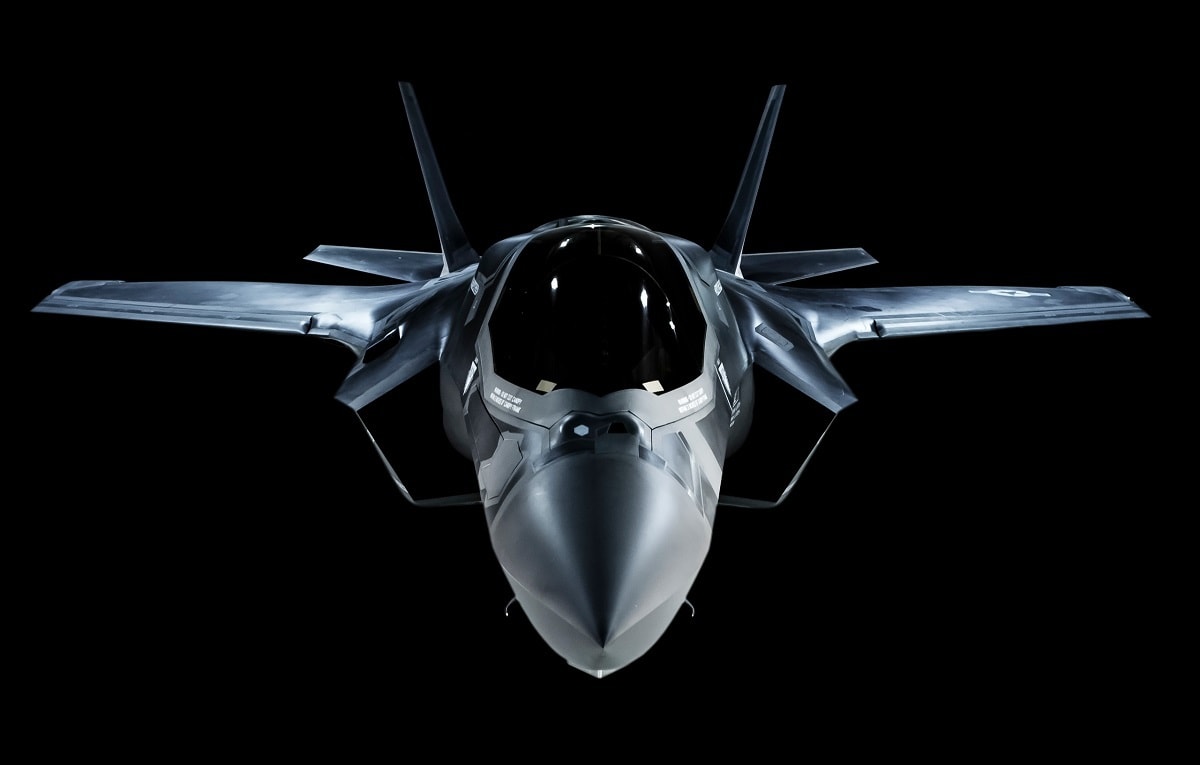
F-35C. Image: Lockheed Martin.

Image: Lockheed Martin.
Although it is costly and seen its share of growing pains for sure, the F-35 is still the world’s most advanced fighter jet.
1945’s New Defense and National Security Columnist, Stavros Atlamazoglou is a defense journalist specializing in special operations, a Hellenic Army veteran (national service with the 575th Marine Battalion and Army HQ), and a Johns Hopkins University graduate.
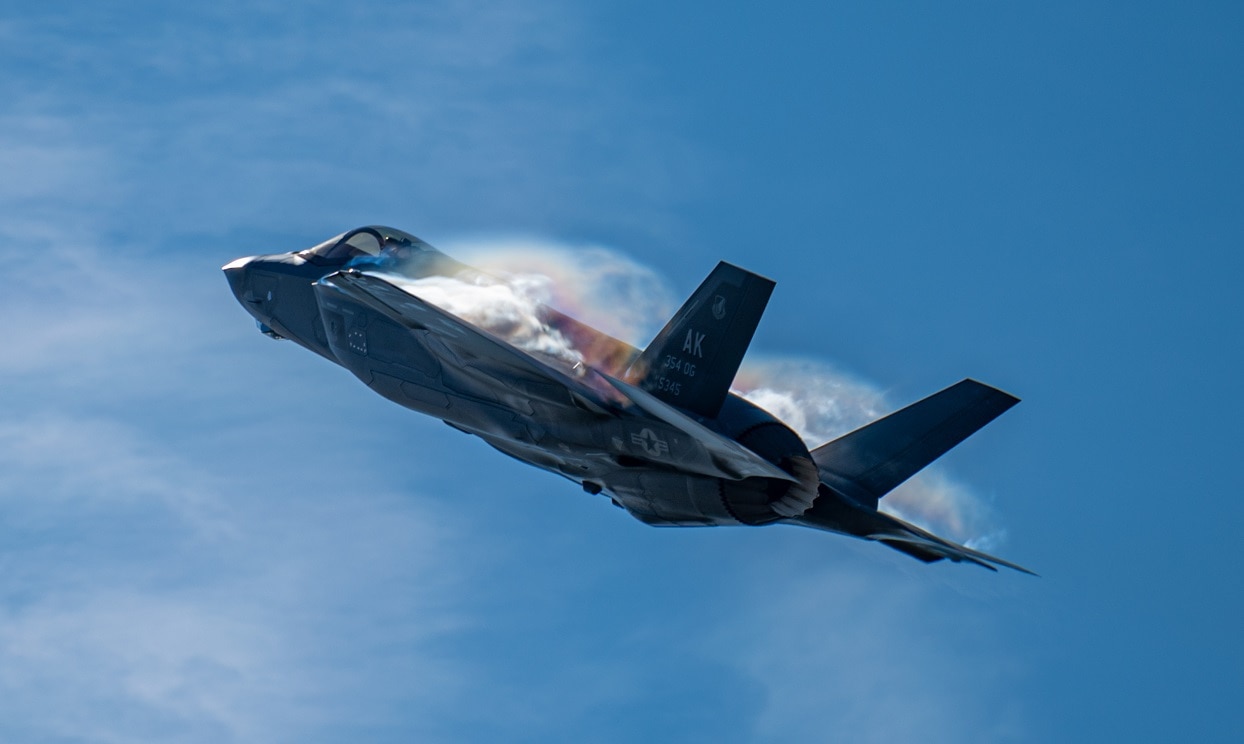
Quarterback in the Sky: The F-35 Is Far More Than Just a Fighter Jet
Blue Flag 21, the largest fighter jet exercise in Israel, just concluded with the participation of the most advanced fighter jets on the planet. With over 70 participating aircraft of many types, the exercise offered an opportunity to see how the F-35 platform would work together with older...
The sensitive (maintenance nightmare) skin of the F-35.
I wonder how often do they overhaul the coating. It's an expensive process AFAIK.The sensitive (maintenance nightmare) skin of the F-35.
The special paint comes from the US and the removed old paint goes to the US.

Ευχάριστα νέα για την Πολεμική Αεροπορία - Τι αποφασίστηκε για τα F-16
Να μην περιοριστεί στην αναβάθμιση των 38 μαχητικών F-16 Block 50 σε Block 52+ με τις συλλογές που θα βγουν από τα μαχητικά 84 μαχητικά...
Greek news sources report that Lockheed Martin believes F35 shipments to Turkiye will be approved by 2025 at the latest
F-35A fighters operationally unready 234 times over 18-month period: lawmaker
South Korea's radar-evading F-35A fighters were rated as operationally unready on 234 occasions over an 18-month period ending in June due to malfunctions, a lawmaker said Tuesday.
Citing Air Force data, Rep. Shin Won-sik of the ruling People Power Party said that during the period, the fighters were grounded on 172 instances while there were 62 cases in which the jets could fly but were unable to carry out certain missions.
Shin disclosed the data, stressing the South Korean military should make strenuous efforts not only to introduce such high-end weapons systems but also to maintain them.
Grounded fifth-generation fighters could carry out missions for only 12 days on average last year and 11 days in the first half of this year.
In comparison, the F-4E and the F-5 older generation fighters were grounded 26 and 28 times, respectively, over the 18-month period.
The Air Force said there were no problems in maintaining the readiness posture as the F-35As met their target operation rate of 75 percent.
It acknowledged issues in acquiring parts for defects identified in the newly introduced model, adding it will work to swiftly receive them from the manufacturer.
South Korea completed the deployment of 40 F-35As in January under the country's first project to procure the stealth fighter manufactured by U.S. defense giant Lockheed Martin.
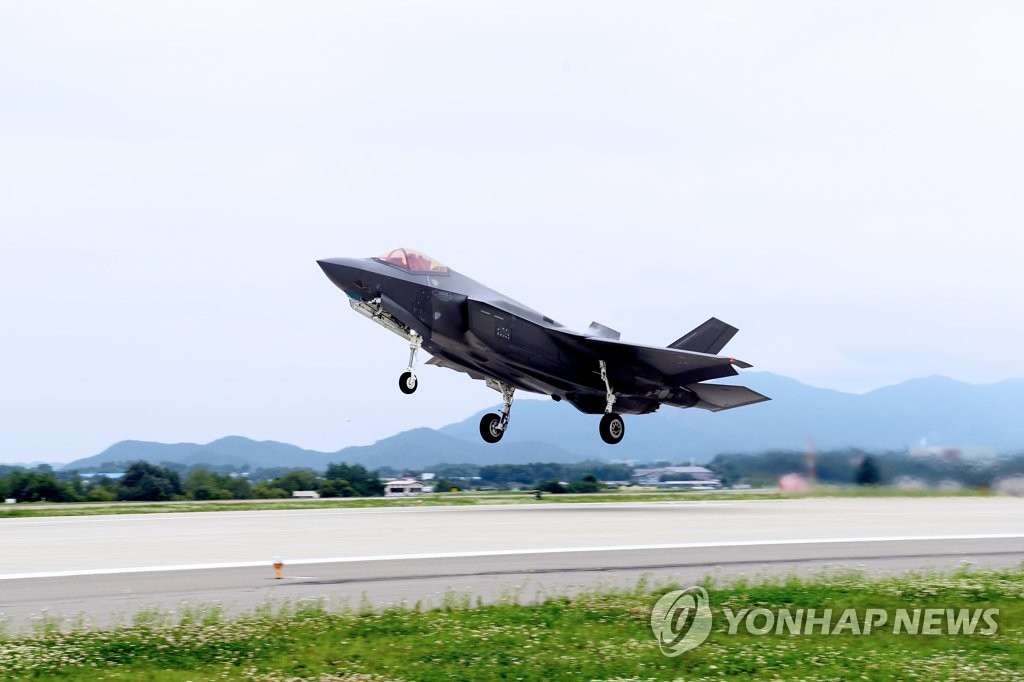
F-35A fighters operationally unready 234 times over 18-month period: lawmaker | Yonhap News Agency
By Song Sang-ho and Chae Yun-hwan SEOUL, Oct. 4 (Yonhap) -- South Korea's radar-evad...
In Britain's F-35 training documentary, it was shown that the pilot was waiting for the password to prepare for the flight and could not move the plane when he entered the wrong password.
A cursory web search shows this "news" to be available only from certain dubious Turkish sources recently, but the original rumor seems to date back to 2019. A commonsensical sense of skepticism should kick in when you hear something this stupid. The Link 16 and MADL data link systems of course would want passwords but like any other such systems they would be able to be changed from within the system when you already have access. The millions-strong army of a nation will buy something to wait everyday for a password to be communicated from the other side of the world. Sure.South Korea gets passwords from
US soldiers every day to air the F-35s it bought from the USA.
In Britain's F-35 training documentary, it was shown that the pilot was waiting for the password to prepare for the flight and could not move the plane when he entered the wrong password.
Also the industrial giant Germany just decided to order 35 F35s, They're so stupid to buy such a useless aircraft. They sure don't have military analysts and experts onboard investigating every nook and cranny before a decision is made.
I don't know why you used Germany as an example when there is so many better examples you could have used, German military is a joke.A cursory web search shows it to be available only from certain Turkish sources recently, but the original rumor seems to date back to 2019. A common sense skepticism should kick in when you hear something this stupid. The Link 16 and MADL data link systems of course would want passwords but like any other such systems they would be able to be changed from within the system when you already have access. The millions-strong army of a nation will buy something to wait everyday for a password to be communicated from the other side of the world. Sure.
Also the industrial giant Germany just decided to order 35 F35s, They're so stupid to buy such a useless aircraft. They sure don't have military analysts and experts onboard investigating every nook and cranny before a decision is made.
Password loading …South Korea gets passwords from
US soldiers every day to air the F-35s it bought from the USA.
In Britain's F-35 training documentary, it was shown that the pilot was waiting for the password to prepare for the flight and could not move the plane when he entered the wrong password.









